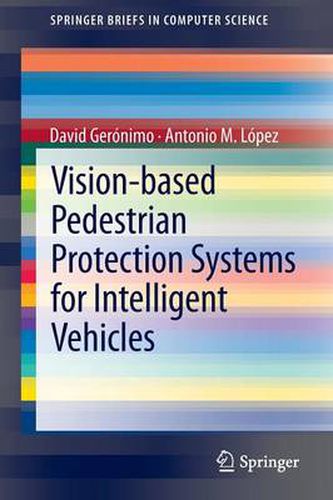Readings Newsletter
Become a Readings Member to make your shopping experience even easier.
Sign in or sign up for free!
You’re not far away from qualifying for FREE standard shipping within Australia
You’ve qualified for FREE standard shipping within Australia
The cart is loading…






This title is printed to order. This book may have been self-published. If so, we cannot guarantee the quality of the content. In the main most books will have gone through the editing process however some may not. We therefore suggest that you be aware of this before ordering this book. If in doubt check either the author or publisher’s details as we are unable to accept any returns unless they are faulty. Please contact us if you have any questions.
Pedestrian Protection Systems (PPSs) are on-board systems aimed at detecting and tracking people in the surroundings of a vehicle in order to avoid potentially dangerous situations. These systems, together with other Advanced Driver Assistance Systems (ADAS) such as lane departure warning or adaptive cruise control, are one of the most promising ways to improve traffic safety. By the use of computer vision, cameras working either in the visible or infra-red spectra have been demonstrated as a reliable sensor to perform this task. Nevertheless, the variability of human’s appearance, not only in terms of clothing and sizes but also as a result of their dynamic shape, makes pedestrians one of the most complex classes even for computer vision. Moreover, the unstructured changing and unpredictable environment in which such on-board systems must work makes detection a difficult task to be carried out with the demanded robustness.
In this brief, the state of the art in PPSs is introduced through the review of the most relevant papers of the last decade. A common computational architecture is presented as a framework to organize each method according to its main contribution. More than 300 papers are referenced, most of them addressing pedestrian detection and others corresponding to the descriptors (features), pedestrian models, and learning machines used. In addition, an overview of topics such as real-time aspects, systems benchmarking and future challenges of this research area are presented.
$9.00 standard shipping within Australia
FREE standard shipping within Australia for orders over $100.00
Express & International shipping calculated at checkout
This title is printed to order. This book may have been self-published. If so, we cannot guarantee the quality of the content. In the main most books will have gone through the editing process however some may not. We therefore suggest that you be aware of this before ordering this book. If in doubt check either the author or publisher’s details as we are unable to accept any returns unless they are faulty. Please contact us if you have any questions.
Pedestrian Protection Systems (PPSs) are on-board systems aimed at detecting and tracking people in the surroundings of a vehicle in order to avoid potentially dangerous situations. These systems, together with other Advanced Driver Assistance Systems (ADAS) such as lane departure warning or adaptive cruise control, are one of the most promising ways to improve traffic safety. By the use of computer vision, cameras working either in the visible or infra-red spectra have been demonstrated as a reliable sensor to perform this task. Nevertheless, the variability of human’s appearance, not only in terms of clothing and sizes but also as a result of their dynamic shape, makes pedestrians one of the most complex classes even for computer vision. Moreover, the unstructured changing and unpredictable environment in which such on-board systems must work makes detection a difficult task to be carried out with the demanded robustness.
In this brief, the state of the art in PPSs is introduced through the review of the most relevant papers of the last decade. A common computational architecture is presented as a framework to organize each method according to its main contribution. More than 300 papers are referenced, most of them addressing pedestrian detection and others corresponding to the descriptors (features), pedestrian models, and learning machines used. In addition, an overview of topics such as real-time aspects, systems benchmarking and future challenges of this research area are presented.